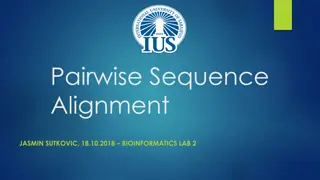Effects of Cue-Do-Review Sequence on Teaching Assistant and Student Perceptions
This study explores the impact of the Cue-Do-Review sequence on teaching assistant and student perceptions of learning. The process involves TAs completing surveys, professional development sessions, implementing the sequence, and final surveys. Results show changes in perceptions before and after implementation, focusing on retention of material, understanding, and effectiveness of teaching methods.
Download Presentation

Please find below an Image/Link to download the presentation.
The content on the website is provided AS IS for your information and personal use only. It may not be sold, licensed, or shared on other websites without obtaining consent from the author.If you encounter any issues during the download, it is possible that the publisher has removed the file from their server.
You are allowed to download the files provided on this website for personal or commercial use, subject to the condition that they are used lawfully. All files are the property of their respective owners.
The content on the website is provided AS IS for your information and personal use only. It may not be sold, licensed, or shared on other websites without obtaining consent from the author.
E N D
Presentation Transcript
Cue Do Review Patty Kohler-Evans, Morgan Bullard, Chayla Rutledge
Content for Presentation Introductions Purpose of Study Sequence Results Cue-Do-Review Model Processing Time Questions/Thoughts/Comments
Purpose of Study Purpose: Examine effects of Cue Do Review sequence on teaching assistant and student perceptions of learning Process: TAs complete survey Students complete survey TAs participate in short professional development session TAs implement Cue Do Review sequence TAs are provided a fidelity checklist Both TAs and students complete a final survey ALL responses are anonymous
Cue Do Review Sequence Cue Provide students with what routine/process will be used. Do The routine/process. Review The information and process.
Results of Student Perceptions Before and After Cue-Do-Review No significance How well the student believed they would retain the material taught in class that day Significant Differences Before and After Implementation Students perceptions of their understanding of the class material Students perceptions of degree to which the instructor helped the student understand the processes and expectations of the classroom The degree to which the instructor helped the students understand the content The perceived effectiveness of the instructors teaching methods
Results of Teaching Assistant Perceptions Before and After Cue- Do-Review No significance Teaching assistant perceptions in the students ability to retain the information presented Teaching assistants perceptions of degree to which the students understood the materials presented in class The teaching assistants perceptions of how helpful the course was for advancing students subject matter The teaching assistants perceptions of the degree to which the students understood the class expectations The teaching assistants perceptions of the degree to which the teacher helped the students understand the content The teaching assistants perceptions of how effective they believed their teaching methods
Overall Conclusions Increased Student Perceptions of Learning Did not increase teaching assistant perceptions; however, teaching assistants may not have realized the overall impact that Cue-Do-Review was having Future Directions Do this study with a larger sample size Do this study with experienced classroom teachers across disciplines
Cue Name the process you will be using Identify what is about to be learned Connect current learning to previously learned information Explain how the process(es) will enhance learning Specify what students need to do to participate in class Engage students in discussion Examples of ideas to introduce class: Pre-assessment Video to generate interest: https://www.youtube.com/watch?v=9l- YYqjhVi4&feature=player_embedded Model KWL chart Pose question to think about throughout lesson 411 Activity (4 things you know, 1 question you have, 1 thing you are unsure of)
Do Teach the content using the processes you named in Cue The Do part of the lesson is the part that gets most of your attention Do includes activities, lectures, labs, discussions, group work etc.
Review Check understanding of the content Ask questions about how processes used helped them learn Get feedback regarding unresolved concerns, areas of misunderstanding Examples of ideas to wrap up class: Ticket out Write the big idea and a question Complete discovery card Work in small group to develop summary statement Use group response to indicate level of comfort Complete L section of KWL chart























